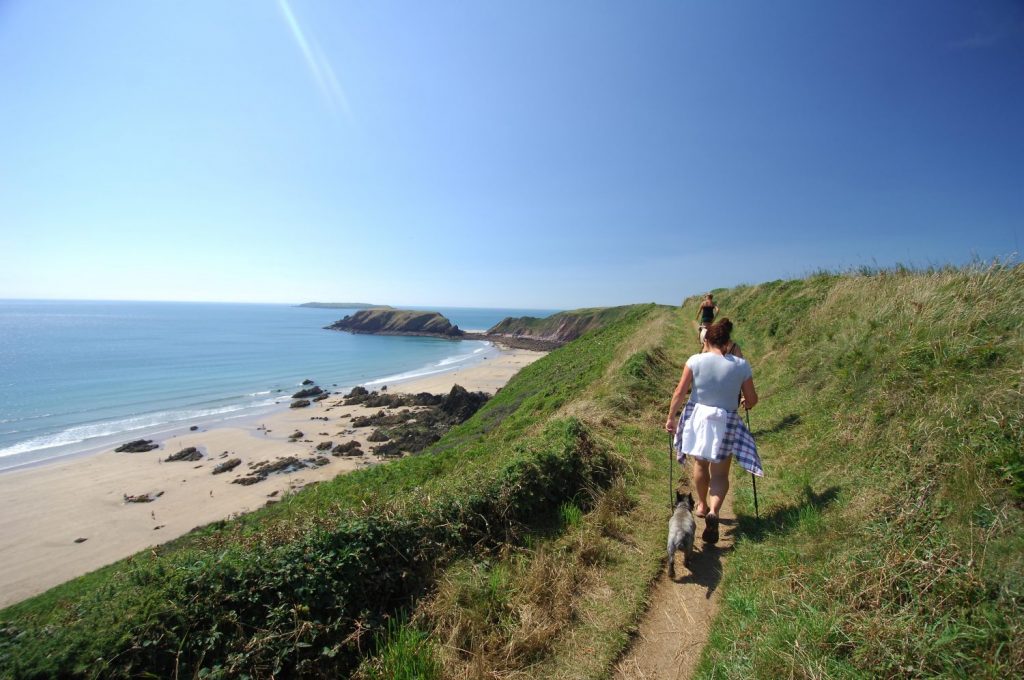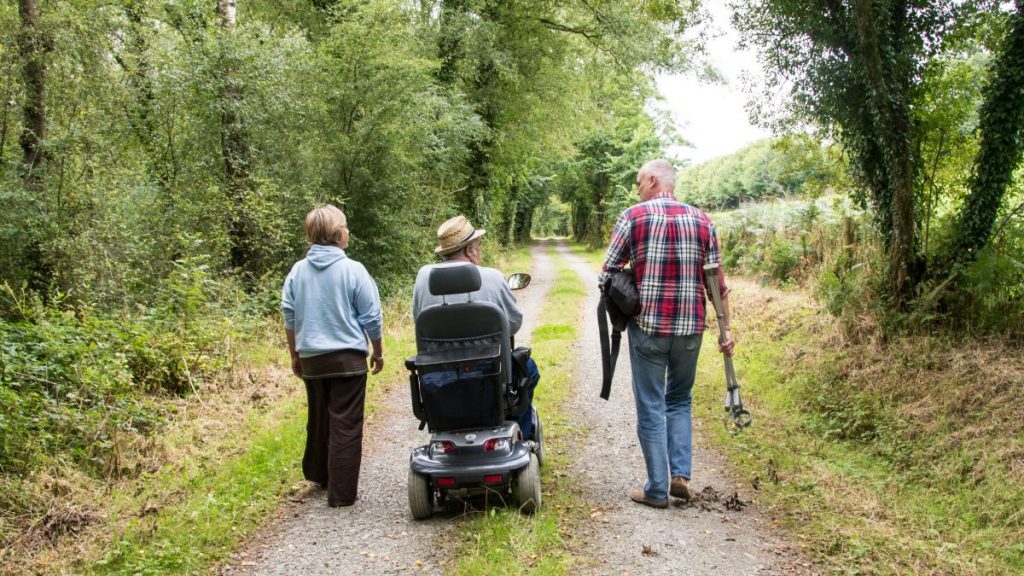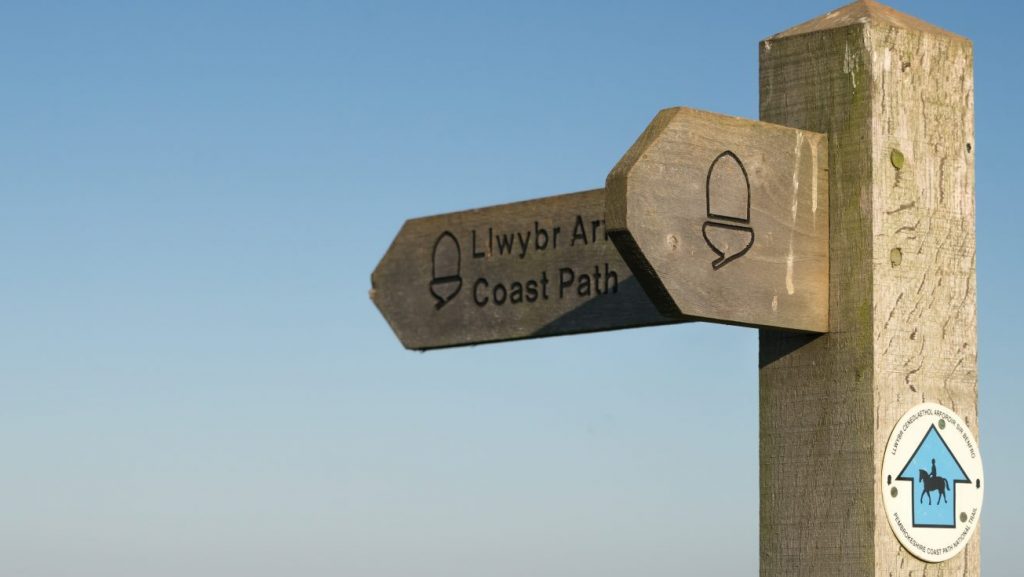DISTANCE/DURATION: 7.4 miles (12.0 km) 4 hours one way.
PUBLIC TRANSPORT: Service bus Rosebush 344 (Tuesdays only).
CHARACTER: Linear ridge-top route, rugged moorland, livestock and boggy in places.
LOOK OUT FOR: Pre-historic golden road, Bronze Age burial mounds, Carn Menyn – site of Stonehenge bluestones, superb views. On detour – Foeldrygarn, an impressive Iron Age hill fort.
CAUTION: Keep to well trodden paths to avoid boggy areas. Path not waymarked on open hill. Weather conditions prone to change rapidly, please prepare accordingly: map & compass; appropriate clothing and rations.
Walking the Golden Road is a stirring experience. It takes you along the Preseli ridge across wild moorland following a route that is said to date back to the Neolithic period, 5,000 years ago.
Broadcaster and writer Wynford Vaughan-Thomas wrote of the experience: “Everywhere you feel the presence of the megalithic tomb-builders, of the Iron Age warriors who piled the stones for the great hillforts and of kindly and absent-minded old Celtic saints.”
The track was a main route for travellers in prehistory to and from Ireland. Perhaps the Pembrokeshire bluestones used by the builders of Stonehenge travelled this well trodden byway.
The views are breathtaking, and all along the way there are prehistoric remains to be seen. Starting in the west, the route begins not far from Foel Eryr, which has a burial cairn at its summit.
The stone cairns date from the Bronze Age and mark burials, presumably of someone who was once a local VIP.
After skirting the Pantmaenog Forest the route climbs to Foel Feddau. It, too, has its cairn, as does the rocky tor Carn Bica.
Look out close to Carn Bica for an arrangement of stones known as Beddarthur, an eye-shaped ring of stones said to be the last resting place of King Arthur.
The jagged form of Carn Menyn – like that of all the Preseli tors – is the result of many thousands of years of erosion by harsh weather on the dolerite or bluestone rock.
Traditionally though, the rocky summit was the source of the stone used to build the inner ring of Stonehenge.
It is also worth making the effort to climb to the outcrop at the top of Foeldrygarn, both for the view and to see its Iron Age hillfort.
Within the fort are a trio of cairns that are older than the fort and give the hill its name which means ‘three cairns hill’.
Find this walk
Grid ref: SN166331
COUNTRY CODE!
- Enjoy the countryside and respect its life and work
- Guard against all risk of fire
- Leave gates and property as you find them
- Keep your dogs under close control
- Keep to public paths across farmland
- Take your litter home



